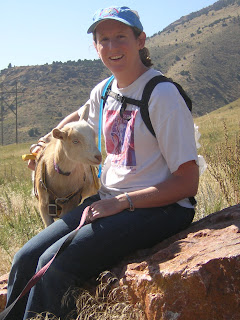I received the information below from Teresa St. Peter, aide to Councilwoman Judy Montero. Teresa was incredibly supportive and helpful to me when I was having my own greenhouse issues with zoning.
Aquaculture greenhouses are, in my opinion, wicked cool. They're featured prominently in the work of Will Allen. If you'd like to learn more about him, you can click
here and
here. Please take a moment to send the email below (or a modified version of it, if you'd like to make edits) to your City Councilperson and your Registered Neighborhood Organization. You can get the contact info for your City Councilperson
here, and your RNO
here.
***
Dear Council(woman/man) _________________
OR
Dear ____________________ (Registered Neighborhood Organization)
I am writing to encourage you to support the aquaculture in B-2 zone districts language amendment for Denver ’s current zoning code.
I believe that allowing for aquaculture in the B-2 zone districts would:
- Allow for a sustainable way to grow a significant amount of healthy organic food on a local level in a condensed area that produces very little waste and pollution – especially when compared to industrial agriculture and other existing business uses.
- Provide fresh healthy food in areas that are severely limited in their food choices. There are too many neighborhoods in Denver where people live too far away from good food choices and too close to unhealthy food choices.
- Provide local jobs.
- Provide training and education in one of the only growing industries in this challenging economy.
- Grow positive local community engagement.
While I hope you will encourage Denver City Planning Department to expand the aquaculture greenhouse use in the new zoning code update, I believe acting now to pass this proposed language amendment is justified in order to launch a specific aquaculture project that has the potential for being a catalyst for drawing other urban greenhouse agriculture centers here to Denver. Denver ’s economy certainly could benefit from such a healthy, economic boost. Similar projects have been undertaken successfully in Milwaukee through the work of Will Allen (featured in the NY Times), and are now spreading throughout the country.
The particular project I am referring to is the Urban Organics’ proposed aquaculture greenhouse at 47th & York in the Elyria Swansea neighborhood. Urban Organics’ goal is to bring an abandoned greenhouse back to life – spurring economic vitality in the neighborhood. The original building was built in 1928 and had functioned as a greenhouse up until three years ago.
Urban Organics aims to use the greenhouse to produce and sell locally grown affordable greens, vegetables, fruit and fish to the community. There will be a small “interactive market” on site giving children the opportunity to plant their next meal and fish for their current meal before going home. The market will feature educational materials on health and living a sustainable life. There will also be a whole sale component to the project where vegetables and fish will be sold to local restaurants.
As part of Urban Organics’ daily operation of the greenhouse, there will be countless educational opportunities for paid employees, student internships and volunteer participants. The long term goal for the greenhouse is to become a permanent fixture of hope, growth and change in the Elyria/Swansea community.
Why am I asking for your support of this language amendment right now? We understand that for Urban Organics to be successful this year, it will have to install the aquaculture system before winter due to the sensitivity of environment for the fish. Further, there will need to be many repairs made before the greenhouse can be refurbished to an operational level. Letting the property sit derelict for another year would be a shame when we can begin to add vibrancy to an already suffering community.
Please support this important language amendment that would allow the kind of positive, clean, healthy business that our communities so desperately need right now.
Thank you,
Name
Contact information
























